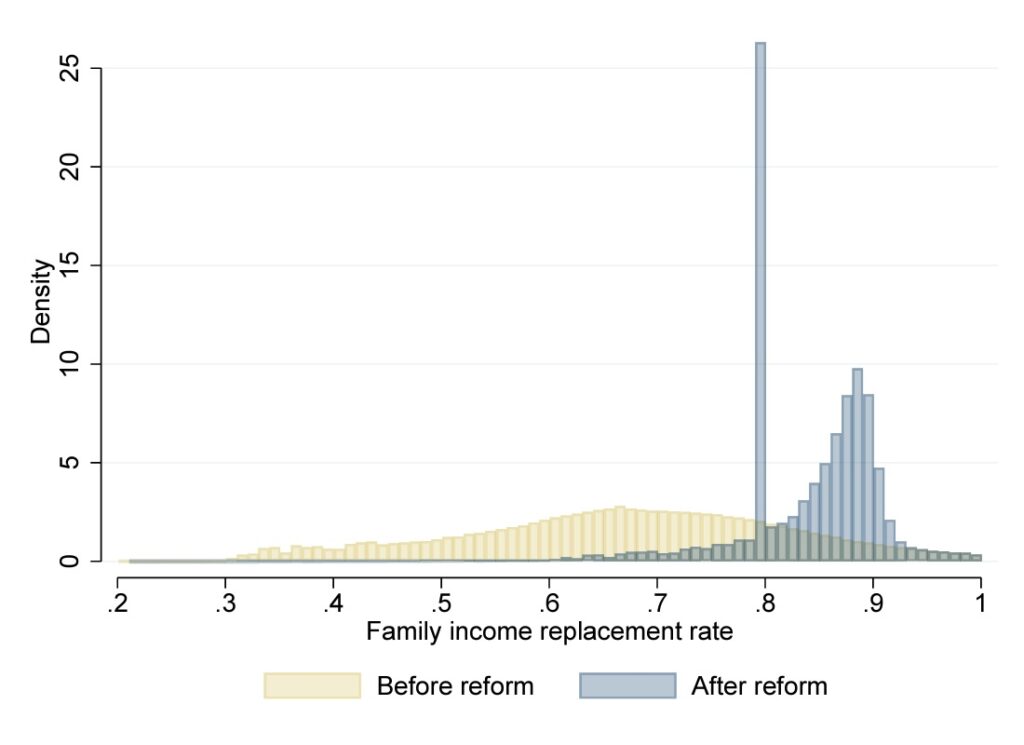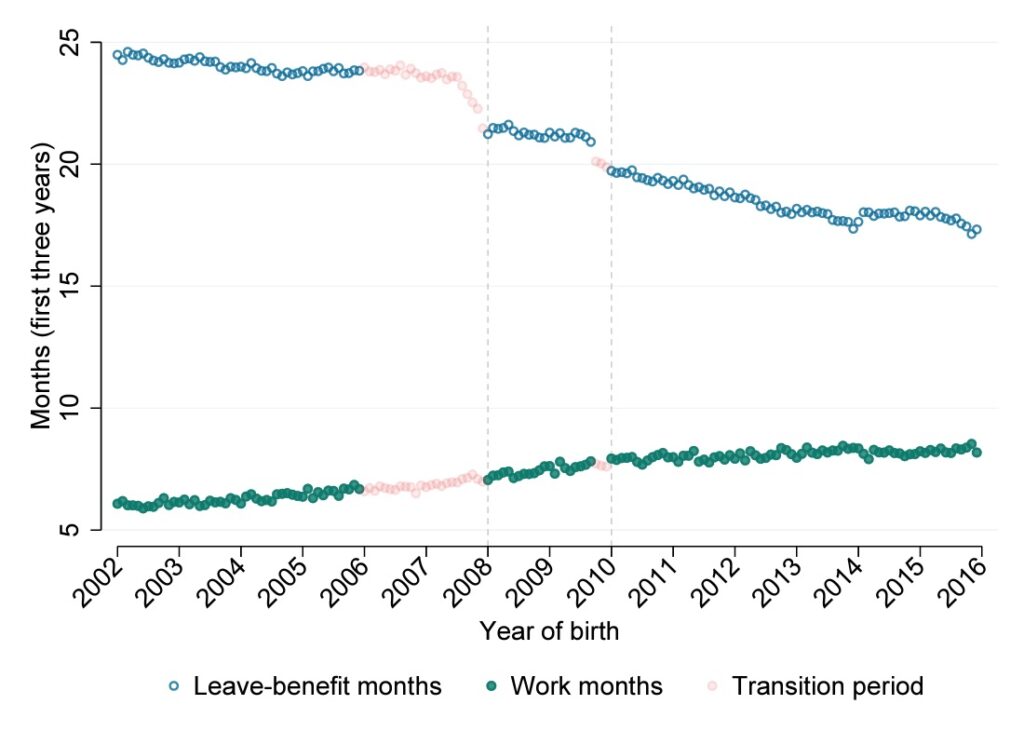Study #1: What Drives Paternity Leave: Financial Incentives or Flexibility?

This study examines how paternal leave-taking is affected by two key features of leave policies: flexibility in leave duration and financial incentives. To assess their impact, we exploit recent changes to the Austrian parental leave system, which initially offered flat monthly benefits for 36 months after childbirth. The first reform added considerably shorter leave options at higher lump sum monthly benefits; the second reform introduced income-dependent benefits, increasing net income replacement rates to 80 percent. Using a regression discontinuity design based on eligibility cutoff dates, we find that both reforms had a strong impact on fathers’ leave take-ups. The availability of shorter leave options increased leave-taking by 23 percent, while the introduction of income-dependent benefits raised it by another 13 percent. Despite these increases, the share of leave months taken by fathers relative to mothers did not change. Comparing the impact of the two reforms across different income groups, we conclude that offering flexible scheme choices is most effective in raising the number of leave-taking fathers.
- Research findings: IZA Discussion Paper (January 2023)
- Non-technical summary: VoxEU Column (June 2023)
Study #2: Does a Flexible Parental Leave System Stimulate Maternal Employment?

Departing from these findings, the second study focuses on changes in maternal leave taking as a response to the reforms. While many women stop working for an extended period after the birth of a child, suitable parental leave policies may help mothers return to the labor market sooner. Exploiting the changes of the two parental leave reforms in Austria, we find that the introduction of more flexible scheme choices led mothers to take, on average, 1-2 months less of leave. This decrease in leave duration, however, was not accompanied by an employment increase of similar magnitude. To understand the absence of labor supply effects, we examine data on work preferences from the Austrian Microcensus. Child care duties are cited as the primary reason for not seeking work but few mothers indicate that they would start working if better access to formal childcare were available. Switching to the more flexible leave system had a minimal effect on the labor market choices of mothers, as the majority continue to prioritize child care responsibilities and do not consider nurseries as a desirable alternative.
- Research findings: IZA Discussion Paper (May 2023)
 Project website
Project website